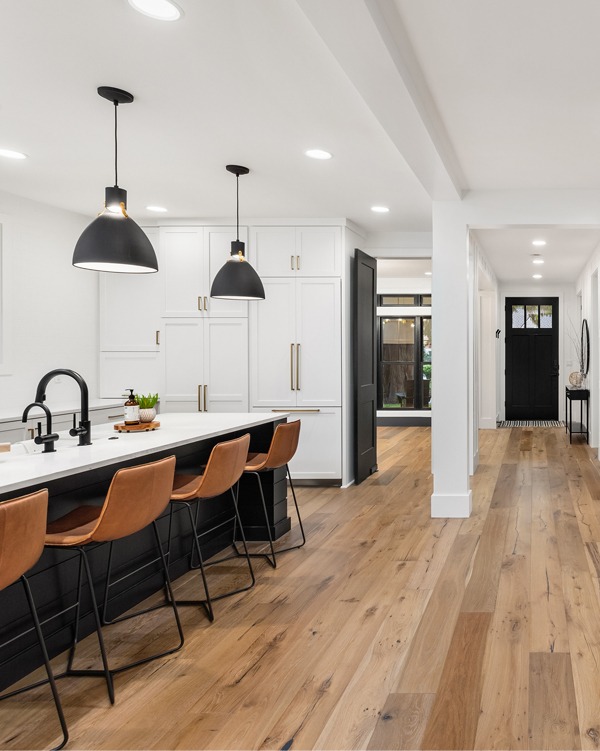Your roof is your home’s first line of defense against the elements, providing protection from rain, snow, wind, and sunlight. Over time, even the most well-maintained roofs will wear out and need to be replaced. Roof replacement is a major home improvement project, but it's also an essential investment that enhances the safety, durability, and aesthetic appeal of your home.
In this blog, we’ll cover everything you need to know about roof replacement, from understanding the signs that it’s time for a new roof to choosing the right materials and working with a professional contractor. Let’s dive into how you can make the best decisions when it comes to replacing your roof.
Signs It’s Time for a Roof Replacement
It can be difficult to know when your roof needs replacing, especially if you're unsure of its age or condition. However, there are several key indicators that a roof replacement is necessary:
1. Age of the Roof
Most roofs have a lifespan of about 20-30 years, depending on the material. If your roof is nearing this age, it’s a good idea to have it inspected to assess its condition. Asphalt shingles, for example, typically last around 20 years, while metal or tile roofs can last 40 years or more.
2. Curling, Cracked, or Missing Shingles
If you notice shingles that are curling at the edges, cracked, or completely missing, it’s a clear sign that your roof is nearing the end of its life. Damaged shingles can allow water to seep into your home, leading to leaks and further structural damage.
3. Frequent Leaks
Recurring leaks in your roof, especially after rain or snowstorms, are a red flag. Water stains on your ceiling or walls, damp spots in your attic, or visible water drips are all signs that your roof is no longer effectively keeping water out.
4. Granules in the Gutter
If you have an asphalt shingle roof and notice granules collecting in your gutters, it’s a sign that the shingles are deteriorating. These granules protect your roof from UV damage, and their loss indicates that your shingles are becoming less effective.
5. Sagging Roof
A sagging or drooping roof is a serious structural issue that often requires immediate attention. This can be caused by water damage, poor installation, or excessive weight on the roof, and it typically means a full roof replacement is necessary.
6. Higher Energy Bills
If your home’s heating and cooling bills have been steadily rising, your roof may no longer be providing adequate insulation. A new roof can help improve energy efficiency and reduce your utility costs by keeping your home better insulated.
The Roof Replacement Process
If you’ve determined that it’s time for a new roof, it’s important to understand the steps involved in the roof replacement process. Here’s a breakdown of what to expect:
1. Roof Inspection
Before replacing your roof, a professional roofing contractor will inspect your current roof to assess its condition and identify any underlying issues. This inspection helps determine whether a full replacement is needed or if repairs can be made. The inspection also ensures that the contractor is aware of any structural issues, such as damaged decking or flashing, that will need to be addressed during the replacement.
2. Choosing Roofing Materials
Next, you’ll work with your contractor to choose the best roofing materials for your home. There are several options to consider, including:
- Asphalt Shingles: The most common and affordable option. They come in a variety of colors and styles, making them versatile for any home.
- Metal Roofing: Known for its durability and longevity, metal roofing is ideal for homes in areas with extreme weather.
- Tile Roofing: Clay or concrete tiles offer a long-lasting and elegant roofing solution, often seen on Mediterranean-style homes.
- Wood Shakes or Shingles: Provide a natural, rustic appearance but require more maintenance than other materials.
- Slate Roofing: A premium, high-end material that is extremely durable and long-lasting but also more expensive.
3. Preparing for the Replacement
Before the actual roof replacement begins, the contractor will prepare your home. This includes protecting landscaping and outdoor furniture, as well as ensuring the worksite is safe for both the workers and your family.
4. Tearing Off the Old Roof
The roof replacement process starts with the removal of the old roof. The existing shingles, underlayment, and flashing will be torn off, and the contractor will inspect the decking (the wooden structure beneath the roof) for any signs of damage or rot. If any decking needs to be replaced, this will be done at this stage.
5. Installing the New Roof
Once the old roof is removed and any necessary repairs to the decking are made, the new roofing materials will be installed. This includes:
- Underlayment: A protective layer that goes between the decking and the shingles to help prevent water from seeping into the house.
- Flashing: Metal strips installed around chimneys, vents, and other roof penetrations to prevent water leaks.
- Shingles or Roofing Material: The primary material, such as asphalt shingles, metal, or tile, is then installed, creating the outermost protective layer.
6. Final Inspection
Once the new roof is installed, the contractor will perform a final inspection to ensure that everything is installed correctly and that there are no issues. They will also clean up the worksite, removing any debris or leftover materials.
Roof Replacement Costs: What to Expect
The cost of a roof replacement can vary widely based on several factors, including the size of your home, the type of materials used, and the complexity of the installation. Here are the main factors that influence the cost:
- Material Choice: Asphalt shingles are the most affordable option, while materials like slate or metal can be more expensive.
- Roof Size and Slope: Larger roofs require more materials and labor, and roofs with a steeper slope may be more challenging to work on, increasing the overall cost.
- Labor Costs: The cost of labor can vary based on your location and the roofing contractor you choose.
- Additional Repairs: If your roof decking or other structural elements are damaged and need to be replaced, this will add to the cost.
While roof replacement is a significant investment, it’s one that can add value to your home and prevent costly repairs down the line. Many homeowners find that the long-term benefits, including improved energy efficiency and increased property value, outweigh the upfront costs.
Benefits of Replacing Your Roof
Replacing your roof comes with a variety of benefits that go beyond just having a new roof. Here’s why investing in a roof replacement is worth it:
1. Increased Home Value
A new roof boosts your home’s curb appeal and can significantly increase its resale value. Potential buyers see a new roof as a major benefit, as they won’t have to worry about making this costly investment themselves.
2. Enhanced Safety
A failing roof can compromise the safety of your home, especially if it’s leaking, sagging, or structurally unsound. A roof replacement ensures your home is well-protected and safe for you and your family.
3. Improved Energy Efficiency
Modern roofing materials offer better insulation and energy efficiency, helping to keep your home warmer in the winter and cooler in the summer. This can lead to lower energy bills and a more comfortable living environment.
4. Better Protection from the Elements
A new roof provides better protection from weather-related damage, including high winds, heavy rain, snow, and hail. Upgrading your roof can also help prevent leaks and water damage, reducing the risk of mold and mildew growth inside your home.
5. Peace of Mind
Knowing that your roof is in excellent condition can give you peace of mind, especially during stormy weather. You won’t have to worry about unexpected leaks or costly repairs for many years after a roof replacement.
Conclusion: Is It Time to Replace Your Roof?
Replacing your roof is one of the most important investments you can make in your home. Not only does it improve your home’s appearance and value, but it also ensures that your home is protected from the elements for years to come. If you’ve noticed signs that your roof may need replacement, or if your roof is nearing the end of its lifespan, it’s time to consult with a professional roofing contractor.
By choosing the right materials, working with a reliable contractor, and understanding the replacement process, you can ensure that your roof replacement is a smooth and successful project.


